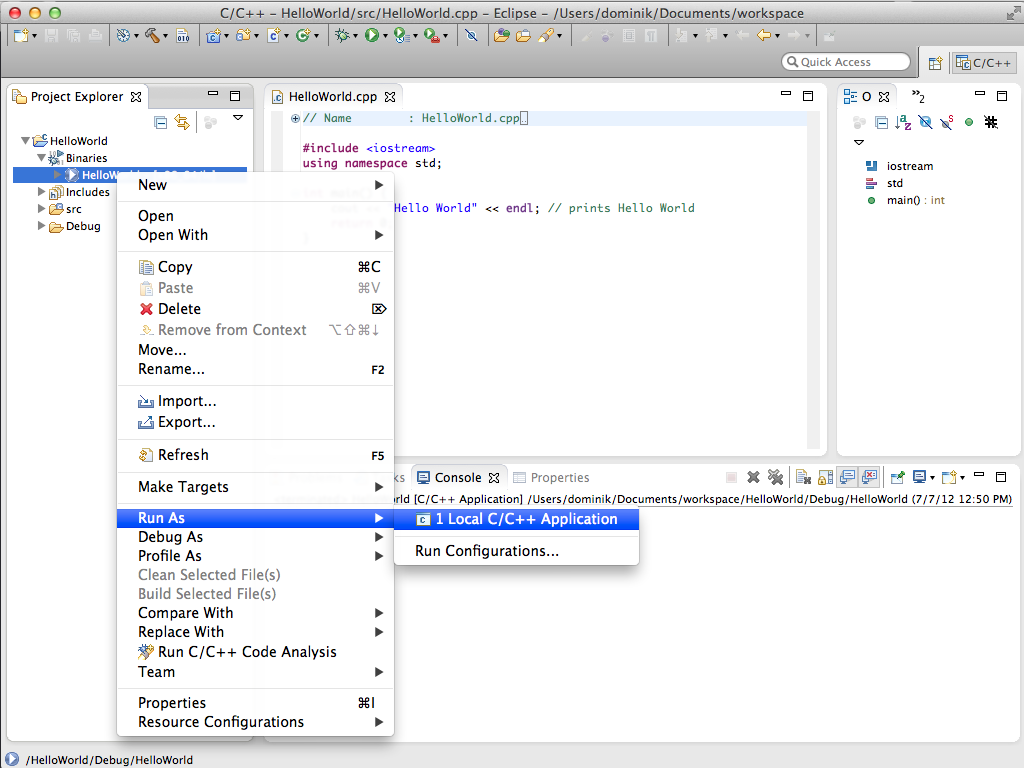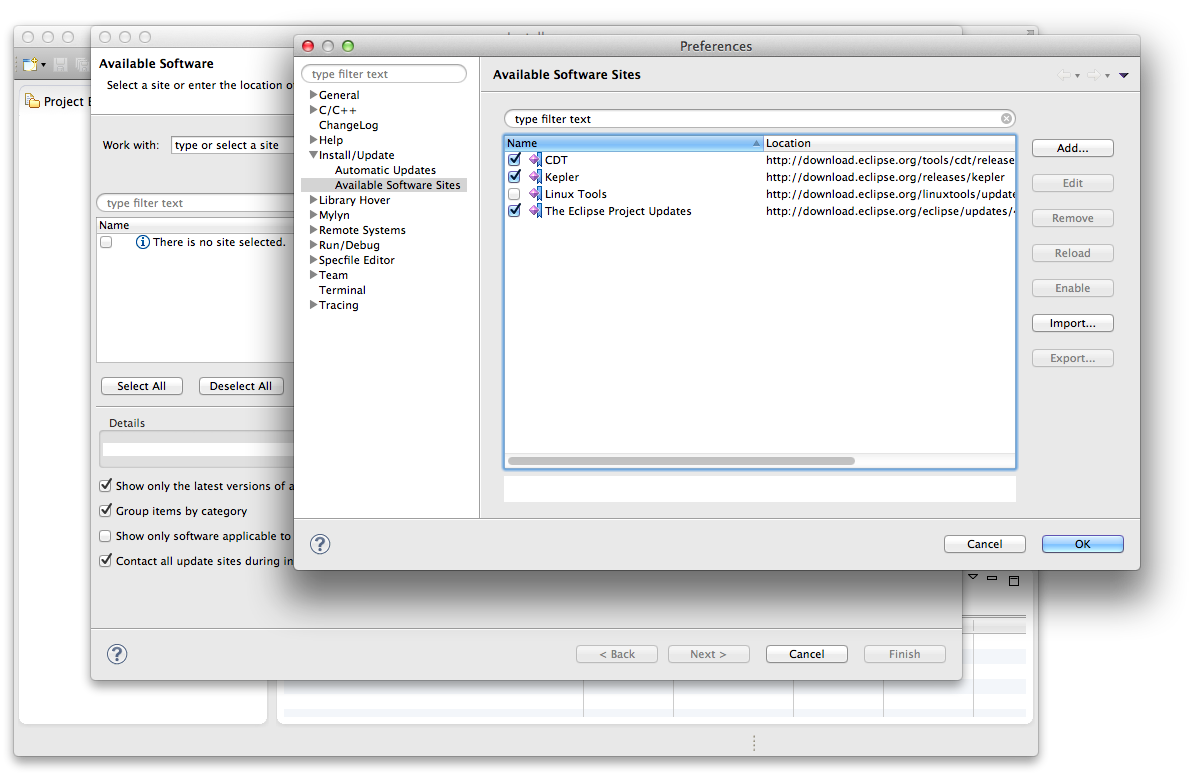
- Configure eclipse for c on mac mac os x#
- Configure eclipse for c on mac code#
- Configure eclipse for c on mac download#
After all, learning c / c ++ in Linux is to consider the operating system. The console will pop up at the bottom of the interface to display the results.Īn example of a complicated point was tested.
Configure eclipse for c on mac code#
Click main.m on the left side of the Xcode main interface, replace the code with C / C ++ code, and click the Run button in the upper left corner to compile and run. Fill in the product name in the Product Name, such as HelloMac, the rest can be the default (C or C ++ can also be selected in the type), click Next, select the path and click Create to complete the project creation.Ĥ.
Configure eclipse for c on mac mac os x#
A dialog box pops up, select Application in the Mac OS X category in the left column, select Command Line Tool on the right, and click Next.ģ. See below for directions for installing Eclipse CDT on a MacBook. These directions are based on Eclipse CDT Neon. Open Xcode and click Create a new Xcode project in the welcome interface.Ģ. Installing Eclipse with C++ Support on Windows. Then I configured the c ++ environment under Xcode as follows:ġ. There is a perfect editor Xcode under mac, but I just want to toss about it. I have no choice but to think about why I want to write a C ++ program with eclipse.

usr / bin / g ++Go back to the properties compiler selection error.Īfter selecting mac gcc in c / c ++ builder-> Tool Chain Editor, build project and compile successfully. Also notice that the IDE picks up some variable from the make file. To add the environment variables: Expand C/C++ Build and click on Environment. Have a meal, and finally came back to solve: These variables are setup to tell eclipse where the tool-chain and the ESP-IDF core is located. ➜ bin echo | gcc -print-prog-name = cc1plus -vĪpple LLVM version 5.0 (clang-500.2.79) (based on LLVM 3.3svn) Library / Frameworks (framework directory) System / Library / Frameworks (framework directory) Applications/Xcode.app/Contents/Developer/Toolchains/XcodeDefault.xctoolchain/usr/include Applications/Xcode.app/Contents/Developer/Toolchains/XcodeDefault.xctoolchain/usr/bin/./lib/clang/5.0/include Applications/Xcode.app/Contents/Developer/Toolchains/XcodeDefault.xctoolchain/usr/bin/./lib/c++/v1 Ignoring nonexistent directory "/ usr / include / c ++ / v1" ➜ ~ echo | gcc -Wp, -v -x c ++-fsyntax-onlyĬlang -cc1 version 5.0 based upon LLVM 3.3svn default target x86_64-apple-darwin13.1.0 Found the answer, enter it in the terminal, and run as follows: When I use Mac, I want to find the include path of the default gcc compiler. Later, I found that the problems encountered by everyone are basically using MingGW. This is mainly the process of getting familiar with eclipse c ++ ide. > ProvidersĪnd select "CDT GCC Built-in Compiler Settings".


Most of them have the disadvantage that they are only available for one. Go to Project > Properties > C/C++ General > Preprocessor Includes. There are several freely available C and C++ development environments available. Run it directly and find the error, as follows:įor the solution, refer to the solution on stackoverflow, because the include file in the gcc environment is not added, so it cannot be referenced.
Configure eclipse for c on mac download#
Download Eclipe C ++ IDE more than 200 M from the official website, it is an app (because I am confused with the original Eclipse plug-in, an app is listed separately).


 0 kommentar(er)
0 kommentar(er)
